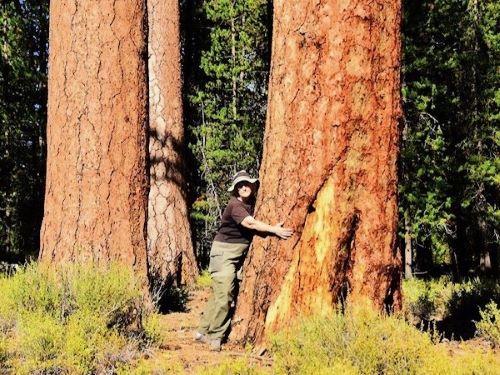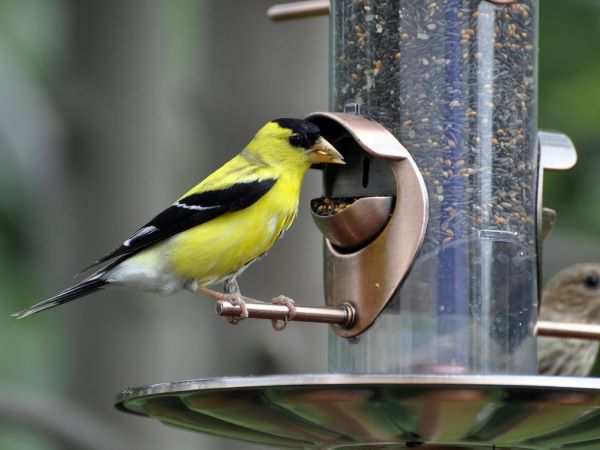Our Habitat Haven volunteers have begun site visits and been enthusiastically received. At the start…
A heron’s slender body elongates as it stretches its neck to spear a fish; a chunky Marbled Murrelet beats her wings rapidly as she carries a breakfast of fish for her young from the ocean to the forest; small shorebirds scurry like wind-up toys through the ebb and flow of the ocean tidewater. One-quarter of all bird species in North America use coastal habitats for some part of their annual cycle. Coastal watersheds are home to a plethora of birds and other wildlife, plants, and fish. All rely on unpolluted waters, which is why the federal Clean Water Act is important in maintaining their habitat. However, the act only regulates pollution that discharges from a pipe; all other sources of runoff pollution—that is, nonpoint source pollution— are not covered. In order to encourage states to reduce nonpoint source pollution, Congress passed the Coastal Zone Act Reauthorization Amendments (CZARA) in 1990. CZARA required states to get approval from the federal government for their Coastal Nonpoint Pollution Control Programs (CNPCP) by 1996—but here we are in 2014, and Oregon has never gained full approval.
According to the National Oceanic and Atmospheric Administration (NOAA), states are required “to develop a CNPCP that describes the programs and enforceable mechanisms to be used to implement management measures to prevent and control polluted runoff in coastal waters.” Waters are at risk from pesticides and other toxic chemicals, oil and grease, sediment, salts, as well as excess bacteria and nutrients released from agricultural and timber lands, roads and urban areas, construction and mining areas, eroding stream banks, livestock, and faulty septic systems. “Nonpoint source pollution is the most significant remaining water quality issue in the state and the nation,” said Dennis McLerran, the Environment Protection Agency’s (EPA) regional administrator for the Pacific Northwest and Alaska.
The federal government, specifically NOAA and EPA, is now taking public comment until March 20 on Oregon’s CNPCP. A proposal to disapprove the program is on the table, and the government will come to a final decision in May. So far Oregon’s program has been found lacking in those areas that were reviewed. Suggested improvements include controlling impacts from timber harvesting, such as ways to protect small and medium sized streams; addressing landslide hazards; and dealing with runoff from forest roads. Federal agencies have frequently noted that our neighbor states, Washington and California, employ far more protective logging practices. Further provisions must require that septic systems be inspected and properly maintained. The program must also address protection for rivers and streams from sediment runoff resulting from new development, especially in urban areas.
It is important that the agencies hear that we, the people, hold the state accountable for developing an effective plan. NOAA and EPA also have concerns about nonpoint source impacts from agricultural activities, and they are inviting comments from the public on the state’s agricultural program as well. Pesticides and herbicides from both agricultural and timber activities run off into the watershed and negatively affect plants, animals, and drinking water quality. Although there are buffers currently in place along fish-bearing streams (there is much disagreement about their adequacy, however), EPA and NOAA have also invited comments about non-fish-bearing streams, which would also greatly benefit from buffer zones where pesticide use is not permitted.
It is important that the state produces more than a plan on paper. Stage agencies must implement specific and enforceable actions with measurable outcomes that result in water quality improvements.
Full approval of Oregon’s Coastal Nonpoint Pollution Control Program is required for the state to continue to receive federal grant funds; much of this money pays for technical assistance to reduce coastal pollution.
Please consider letting the federal agencies know that protection of our watersheds is important to Oregonians and that you demand a better program for our state. Public comments should be sent to:
Joelle Gore, Acting Chief, Coastal Programs Division
(N/ORM3)
Office of Ocean and Coastal Resource Management,
NOS, NOAA
1305 East-West Highway
Silver Spring, MD, 20910
Telephone 301.713.3155, x 177
Email: joelle.gore (at) noaa.gov
Remember, comments are due by March 20, 2014.
See the following webpages for more information and suggestions for commenting:
Filthy water cannot be washed. (West African Proverb)



